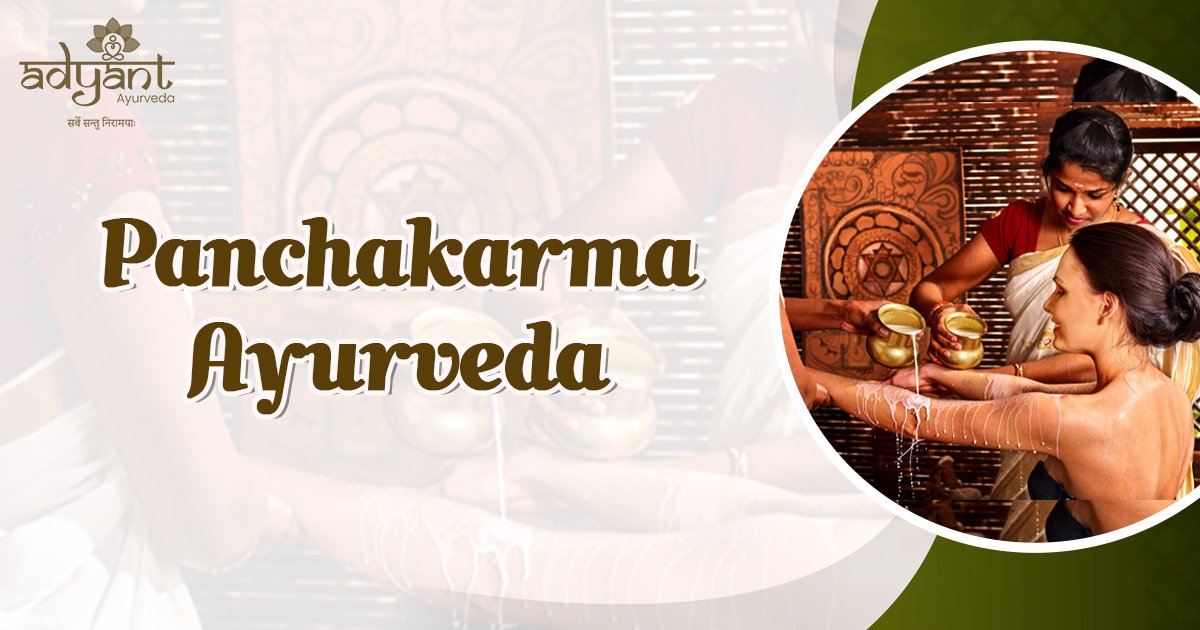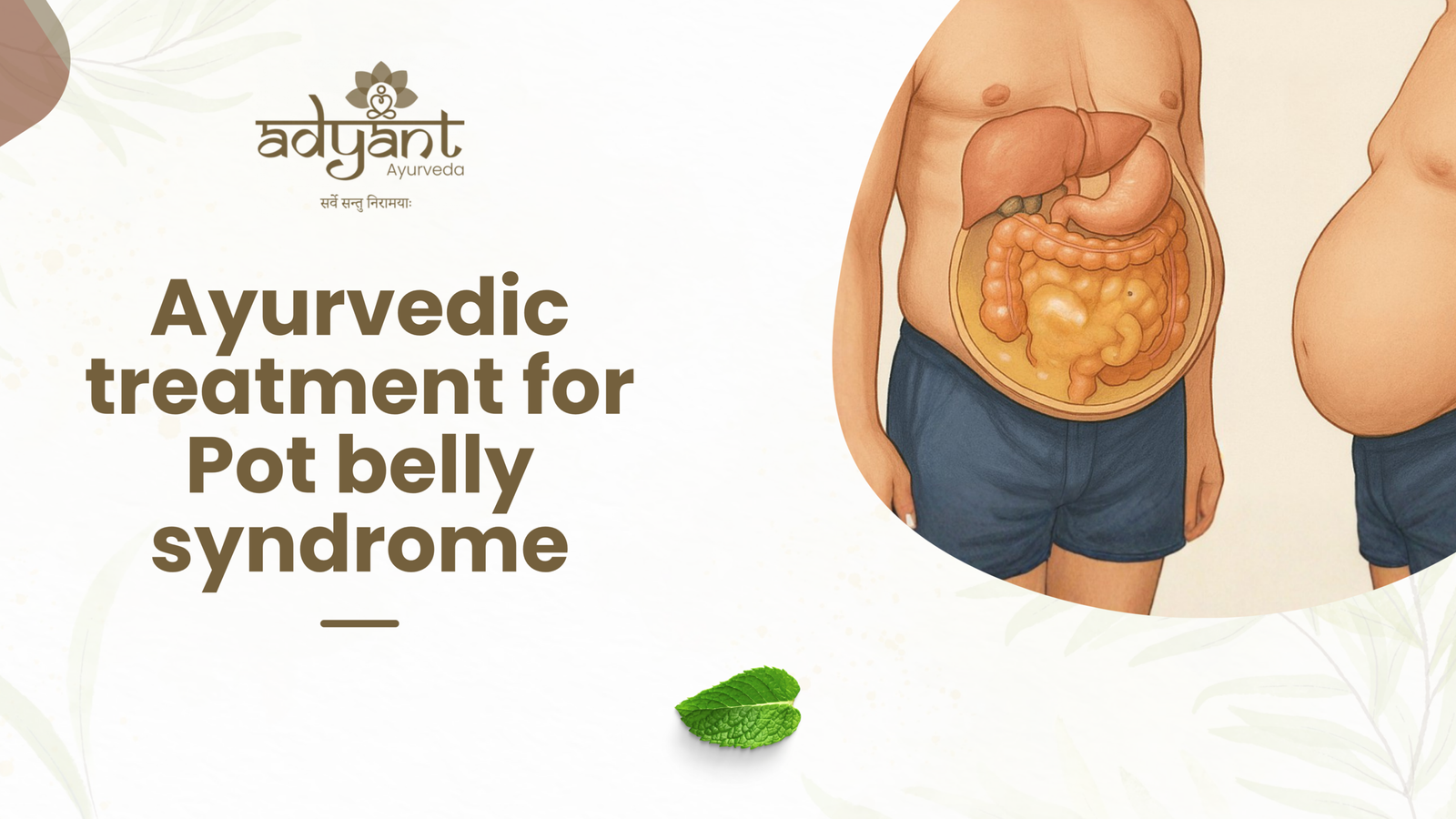Table of Contents
Toggle
Ayurvedic Treatment for Spine: In the realm of healthcare, Ayurveda has emerged as a holistic system that not only addresses various ailments but also emphasizes preventive measures and overall well-being. Spinal health, often overlooked until discomfort arises, plays a pivotal role in our overall physical and neurological function.
Adyant Ayurveda, a pioneer in holistic healing, offers comprehensive Ayurvedic treatments for spinal issues and spinal cord injuries. Unlike conventional treatments that focus on symptom management—such as painkillers, steroids, or surgeries—Ayurveda aims to restore balance and promote natural healing. This blog explores the Ayurvedic understanding of the spine, the different types and causes of spinal injuries, and effective Ayurvedic treatment options for a healthier spine.
For a free consultation with top ayurvedic doctors for Spine Ayurvedic Treatment, download our app from Play Store “AyurCare“
Understanding the Spine in Ayurveda
The spine, or vertebral column, is a crucial component of the human anatomy. Comprising 33 vertebrae, it provides structural support, protects the spinal cord, and allows for flexibility in movement. The spine is divided into five regions:
- Cervical Spine (Neck) – Supports the head and enables movement.
- Thoracic Spine (Upper & Mid Back) – Provides stability and protects vital organs.
- Lumbar Spine (Lower Back) – Bears most of the body’s weight and facilitates movement.
- Sacral Spine (Pelvis) – Connects the spine to the hip bones.
- Coccyx (Tailbone) – Provides attachment for ligaments and muscles.
From an Ayurvedic perspective, the spine is primarily governed by Vata Dosha, which is responsible for movement, nerve impulses, and flexibility. Any imbalance in Vata Dosha can lead to conditions like stiffness, degeneration, and nerve-related disorders.
You May Like Also: How to Balance Vata Dosha?
Types of Spinal Cord Injuries
Spinal cord injuries can vary in severity and are classified based on their impact:
1. Complete Spinal Cord Injury:
A complete spinal cord injury results in a total loss of sensory and motor function below the level of the injury.
Characteristics:
- Loss of sensation and movement below the injury site.
- No voluntary muscle control or reflexes.
- Often results from severe trauma, compression, or severing of the spinal cord.
2. Incomplete Spinal Cord Injury:
An incomplete spinal cord injury means that some function remains below the injury level.
Characteristics:
- Partial movement and sensation may be retained.
- Recovery potential varies depending on severity.
- Results from partial damage, allowing some nerve signals to pass through.
Common conditions under spinal cord injuries include paraplegia (paralysis of lower limbs) and quadriplegia (paralysis of all four limbs).
Read Also: Ayurvedic Treatment for Paralysis
Causes of Spinal Cord Injuries
Spinal cord injuries result from traumatic and non-traumatic causes:
Traumatic Causes:
- Accidents: Motor vehicle collisions, falls, sports injuries.
- Physical Trauma: Gunshot wounds, assaults, or sudden impact.
- Repetitive Strain: Poor posture, heavy lifting, and sudden jerky movements.
Non-Traumatic Causes:
- Degenerative Disorders: Herniated discs, spinal stenosis, spondylosis.
- Inflammatory Conditions: Ankylosing spondylitis, arthritis.
- Infections: Tuberculosis of the spine, meningitis.
- Tumors: Both benign and malignant growths affecting the spine.
From an Ayurvedic standpoint, chronic spinal disorders are often linked to an aggravated Vata Dosha, leading to dryness, stiffness, and nerve damage.
Ayurvedic Treatment for Spinal Cord Injuries
Ayurveda offers a multidimensional approach to healing spinal injuries by focusing on restoring Dosha balance and rejuvenating damaged tissues.
1. Herbal Remedies Used in Ayurvedic Treatment for Spine:
- Ashwagandha: Reduces inflammation and strengthens nerves.
- Shatavari: Promotes tissue regeneration.
- Guggulu: Relieves joint pain and stiffness.
- Rasna & Nirgundi: Improve mobility and relieve pain.
- Bala: Enhances muscle strength and supports nerve function.
Read Also: Ayurvedic uses & Benefits of Ashwagandha
2. Dietary Modifications:
- A warm, nourishing diet rich in ghee, sesame oil, almonds, and leafy greens pacifies aggravated Vata.
- Avoid processed foods, excessive caffeine, and cold foods, which worsen Vata imbalance.
3. Lifestyle Changes:
- Daily Routine (Dinacharya): Maintaining regular sleep, meal, and exercise patterns.
- Yoga & Pranayama: Beneficial asanas include Bhujangasana (Cobra Pose) and Marjariasana (Cat-Cow Pose).
- Hydration & Detox: Drinking herbal teas infused with ginger, turmeric, or triphala.
4. Ayurvedic Therapies Used in Spine Ayurvedic Treatment:
- Abhyanga (Oil Massage): Warm herbal oils improve circulation and reduce stiffness.
- Kati Basti: Retaining medicated oil on the lower back for deep healing.
- Patra Pinda Sweda (Herbal Pouch Therapy): Reduces pain and inflammation.
- Pizhichil: Warm oil therapy for nerve regeneration.
- Nasyam (Nasal Therapy): Clears toxins affecting nerve function.
- Panchakarma Detox: Comprehensive purification to remove deep-seated toxins.
These therapies, when administered under expert guidance at Adyant Ayurveda, significantly enhance flexibility, relieve inflammation, and promote spinal rejuvenation.
Ayurvedic Treatment for Spine – Conclusion
Adyant Ayurveda stands as a beacon of holistic healing in spinal cord injury treatment. Unlike conventional treatments that focus on symptom suppression, Ayurveda aims at root-cause healing through herbal medicine, dietary regulation, Panchakarma therapies, and lifestyle modifications.
The wisdom of Ayurveda, backed by scientific advancements, offers a sustainable approach to spinal health. Whether you’re recovering from an injury or seeking preventive care, Ayurvedic treatments can be life-changing. At Adyant Ayurveda, we help individuals regain mobility, strength, and overall wellness through personalized Ayurvedic solutions.
For expert consultation and tailored Ayurvedic spinal treatments, contact Adyant Ayurveda today.
FAQs – Ayurvedic Treatment for Spine
1. How does Ayurveda differ from conventional treatments for spinal cord injuries?
Ayurveda focuses on natural healing, addressing the root cause of the problem instead of merely treating symptoms. Unlike conventional medicine that relies on painkillers and surgery, Ayurveda restores balance using herbs, detox therapies, and lifestyle corrections.
2. Can Ayurvedic treatments be personalized for individual needs?
Yes, Ayurvedic treatments are customized based on one’s Prakriti (body constitution), Dosha imbalance, and specific spinal conditions.
3. Are Ayurvedic therapies safe for long-term use?
Yes, Ayurvedic therapies use natural ingredients and non-invasive techniques, making them safe for long-term use under expert supervision.
4. How does Ayurveda view the role of diet in spinal health?
Ayurveda recommends a Vata-pacifying diet, including warm, nourishing, and easily digestible foods, to promote spinal health and nerve function.
5. Can Ayurvedic treatments be used alongside conventional medical interventions?
Yes, Ayurveda can complement modern medicine. However, it is essential to consult with both Ayurvedic and conventional doctors for an integrated treatment plan.
For more information or to book a consultation, visit Adyant Ayurveda, Bangalore.









